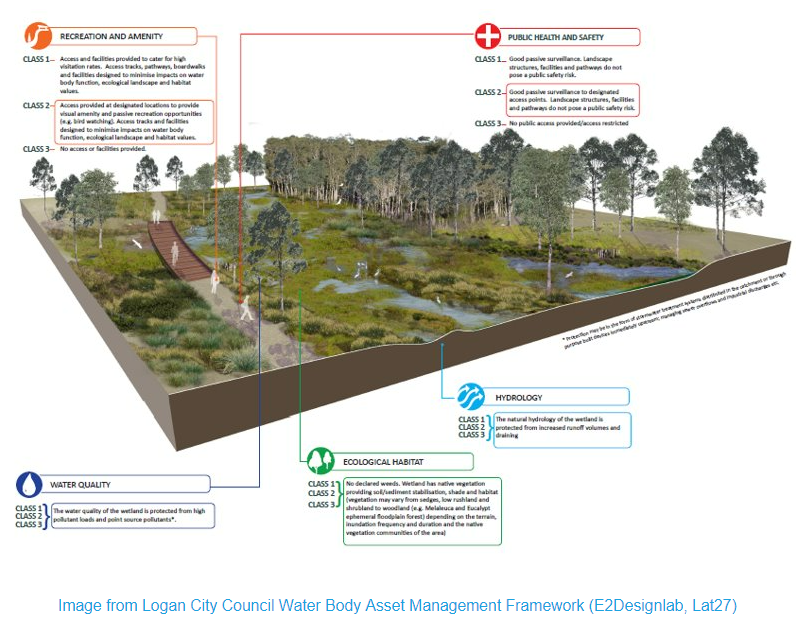Strategic Asset Management: Preserving Our Natural Ecosystems for a Sustainable Tomorrow

Strategic asset management (SAM) plays a critical role in answering the United Nations' (U.N.) call to build a greener, more sustainable future by 2030. In 2015, the U.N. created 17 Sustainable Development Goals, described as a "shared blueprint for peace and prosperity for people and the planet, now and into the future."
Of the 17 global goals, we believe SAM can make the most significant impact by tackling the following:
Goal 9: Industry innovation and infrastructure by building more resilient and sustainable assets;
Goal 11: Sustainable cities and communities by reducing urban impacts on the environment and supporting integrated planning and management processes;
Goal 13: Climate action by thinking about the short- and long-term impact of asset management decisions on the environment; and
Goal 15: Life on Land by improving the management and recognition of ecological assets as part of environmental, social, and governance (ESG) responsibilities.
With the above goals in mind, Brightly has partnered with E2Designlab to help organisations include natural assets in their future financial sustainability plans alongside their civil, mechanical, electrical, and marine assets. The Brightly and E2Designlab approach is to work with organisations that want to bring their environmental and asset management teams together by creating a framework that incorporates ecological assets.
What are ecological assets?
Ecological assets cover often-used labels such as “nature-based solutions,” “blue-green infrastructure,” “natural assets,” “soft assets,” environmental assets,” and more. Essentially, they're systems that include natural ecological components such as plants, trees, and water features like salt marshes, mangroves, waterways, and ponds.
They can be constructed systems such as bioretention basins, swales, stormwater treatment wetlands, detention basins, and have engineering elements like retaining walls, weirs, inlet and outlet pits and pipes. This means they can have both natural and “hard” civil asset components.
The combination of these living and non-living components delivers ecosystem services critical to supporting the liveability and prosperity of communities and local wildlife — from providing habitats and biodiversity to water filtering, soil stabilisation, shade and cooling, and carbon capture, as well as reducing the risks of stormwater pollution and flooding.
In areas untouched by humans, natural assets may do fine on their own. Indeed, unlike civil assets, the performance of these natural assets may improve over time. However, in urban areas, impervious surfaces and stormwater drainage can significantly impact the condition and function of ecological assets. Problems can quickly occur without proper management, such as the build-up of sediment and litter and increased stormwater volume. Likewise, the functional failure of these ecological assets can impact surrounding infrastructure, causing even greater headaches for communities, such as road flooding.
Why are ecological assets a challenge to manage?
Asset managers must factor ecological assets into the financial planning and budget allocation process to ensure these systems do not degrade to a point where there are significant issues and big expenses to try to recover them.
Given that their maintenance needs are often far less predictable than something like a road or footpath, maintenance tends to occur when something goes wrong. At that point, restoring ecological assets can be expensive and take years to recover. And unlike many other assets, they cannot be simply decommissioned because they provide essential ecosystem services.
Another common issue is the need to appropriately allocate budgets to maintain these ecological assets, noting that they may not even be recognised as assets in the first place. It is not unusual to find that the ecological asset portfolio is managed separately from the normal corporate asset management systems, and miss out on operational, tactical, and strategic asset management processes.
Advances in incorporating ecological assets into SAM
In recent years, there has been much work around understanding the function, value, and services of ecological assets to balance competing objectives and establish clear criteria for their performance.

Defining multiple levels of service and performance targets that address the complexity of these systems allows authorities to know what standards their ecological assets should be meeting and when they might be falling short.
E2Designlab recently worked with Logan City Council on defining multiple service levels for its natural wetlands around recreation, amenity, hydrology, water quality, ecological habitat, and public health and safety advances. This allows their SAM frameworks to be adapted to include ecological assets, to ensure budget is allocated, and they can take a more proactive and coordinated response to managing the assets. This approach will also allow them to measure the effectiveness of their SAM actions for continuous improvement.
Sydney Olympic Park case study
Sydney Olympic Park is another excellent example of the advancement in incorporating ecological assets into asset management frameworks and planning. Covering 640 hectares of land, Sydney Olympic Park includes a significant portfolio of ecological assets with substantial environmental value, including lakes and ponds, waterways, bioretention systems, wetlands, salt marshes, and mangroves.
The assets provide tremendous value and services, including scenic amenities, hydrology management, flood mitigation, water quality improvement, stormwater harvesting, and significant biodiversity habitat.
When the Sydney Olympic Park Authority (SOPA) recognised that some of the ecological assets were deteriorating, it knew it needed to do something different and seek advice to understand how to manage the systems well into the future.
In partnership with E2Designlab and Brightly, SOPA decided to:
- Develop an asset management framework – Rating the types of assets, asset classes, and values; identifying the levels of service; setting condition scoring criteria; understanding typical maintenance works required; and identifying the risks that could lead to deterioration.
- Assess the condition and associated risks of each asset – Undertaking 158 individual asset condition assessments as well as their supporting hard infrastructure components and putting all information into a costed and prioritised list of maintenance and rectification outcomes.
- Better support on-the-ground teams with information and resources – Providing a go-to guide to help with implementation and support, including the condition of each asset and associated components, as well as the environmental, social, and economic risks, maintenance tasks, and criticality to prioritise those works.
- Bring its ecological assets into a SAM platform – Allowing SOPA to generate financial, service level, and risk scenario modelling across multiple funding strategies to understand the lifecycle trajectories of the assets and formulate the asset management plan.
The art of asset management storytelling
Having a rich and compelling data set is one thing, but utilising it to turn plans into action comes down to the art of asset management storytelling.
There are a few critical aspects to telling a compelling and engaging asset management story. First, focus on the key headline indicators. What are the immediate things that will be vital to deciding which way to go?
For example, with Sydney Olympic Park, having adequate drainage was given a high criticality score because if they didn't address the poor drainage, it would result in the loss of more plants and vegetation dieback. If poor condition was coupled with poor drainage, it would be prioritised as a high-priority maintenance action to address.
Second, create clear, impactful, and interactive visualisations. One of the key advantages of using predictive modelling is that users can slice and dice the asset information in different ways to understand the future impact of decisions, whether that's looking at the overall asset portfolio or by an individual asset. If you can show stakeholders other comparison simulations, compare alternative futures, and dive into the detail of each asset based on scientific evidence that you've collected — the audits on the ground and the lifecycle analysis of how assets are likely to perform over time — it makes for a highly-engaging and persuasive business case.
Third, the assessment framework is critical. The time we spent at Sydney Olympic Park assessing each asset in detail and establishing key service criteria, including non-traditional, values-based service criteria, was vital to the project's success. This relied on the specific ecological and environmental engineering subject matter expertise of E2Designlab.
With this asset management framework, Sydney Olympic Park could integrate their ecological assets into their broader asset management processes and systems. Doing so allowed them to develop an asset management plan to sustainably deliver levels of service across all the different service items, manage their risk, and drive continual improvement in their portfolio over the next 20 years.
Evolution in SAM for ecological assets
While, historically, natural ecosystems have sat on the fringe of asset management, it's becoming ever more critical that they are incorporated into long-term sustainability plans alongside civil, mechanical, electrical, and other asset types.
The management of ecological assets must be done in a way that addresses both environmental and civil components to ensure that risks are mitigated and that the ecological assets aren't inadvertently impacting nearby infrastructure.
While asset managers will always face fiscal constraints, the sooner they can integrate ecological assets into SAM planning, the more cost-effective it will be to maintain these systems over time and avoid high-cost rectification works from leaving vital ecological assets to deteriorate.
The best place to start is to bring together the right team with expertise in ecological assets and strategic asset management. Next, tap into the science and art of asset management storytelling by using predictive analytics to help deliver a compelling story that clearly and concisely demonstrates what decisions management must make and the consequences of those decisions.
The fantastic work achieved by Sydney Olympic Park shows the power of what's possible when accommodating ecological assets and recognising the essential services they deliver in helping us build greener, more sustainable communities.






